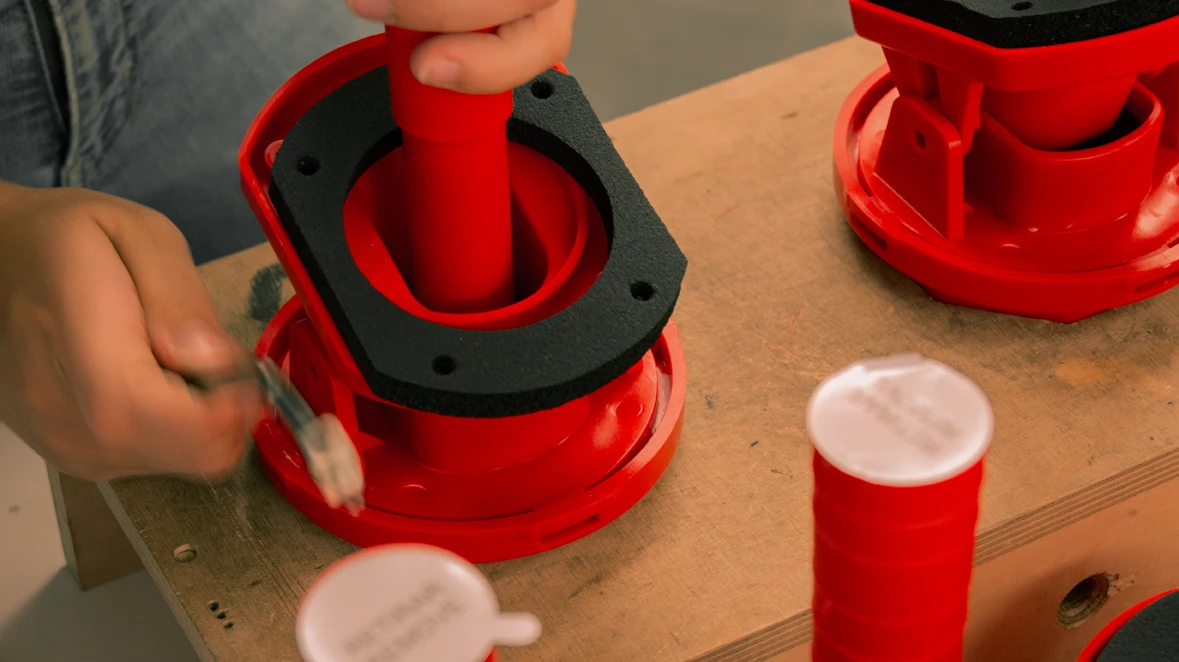Technology that never stands still
There are industries where innovation is optional. Ours is not one of them. In the world of IoT, industry and telecommunications, evolution is not a luxury—it’s a requirement for survival.
We’re living in a time where digitalisation is reaching even the most traditional environments. Stock control, which just a few years ago was done manually or with complex, costly custom solutions, is now transforming thanks to technologies like IoT and low-power communication networks. This shift has not only changed how we manage resources—it has reshaped the expectations of those managing them.
At MCSystems, our purpose is clear: we don’t build technology to look good in a brochure or to tick boxes on a spec sheet—we create it to meet real, evolving, and demanding needs. That’s why we continuously review, rethink, improve, and start over. That’s been the story of Silometric, and today we want to share it—not just as a timeline of versions, but as a living example of what it means to build useful, accessible technology in a world that never stops moving.
The beginning: When an idea meets a real need
It all started with a question that wasn’t about making better tech, but about making it more accessible. The real challenge was: “How can we bring stock monitoring technology within everyone’s reach?”
Our goal wasn’t to build a system exclusively for large industries. We set out to create a solution that could work in a small cooperative, a large facility, a logistics warehouse or even a family farm. We wanted to democratise stock monitoring—make it accessible, easy to install, intuitive, and maintenance-free.
That question pushed us beyond the office. It made us go out and listen—understand the realities of the field, the cooperatives, the companies that don’t have the time or budget to manage complex systems. We wanted to break the barrier between technology and the people using it. And we knew this would only be possible if the product met three conditions: affordability, zero maintenance, and installation with basic tools.
The first version of Silometric wasn’t perfect. But it was a solid first step toward that vision: a device capable of reaching places where there was nothing before—and doing it efficiently and realistically.
What our early mistakes taught us
With every new installation, we learned something. Sometimes it was an inconsistent data point. Other times, a misreading caused by dust. We also realised that many clients didn’t need complexity—they needed reliability and silent performance.
This learning led to deep changes: better transmission, a reworked internal architecture, energy-saving improvements, and a redesigned mounting system for faster setup. We also committed to Sigfox as our communication technology—stable, low-power, and with excellent coverage, even in remote locations.
Each improvement wasn’t a commercial move—it was a response to how the product was actually being used.
Turning evolution into a mindset
Looking back, comparing a 2016 prototype to today’s Silometric shows a huge leap. But the real change isn’t physical—it’s how our approach to innovation has matured as a team.
We don’t see development as a project with a beginning and an end. It’s an attitude. A way of being present in the industry: alert, close, and adaptable.
Beyond lasers: combining technologies to match each environment
Once we built a solid, intuitive and easy-to-install system, we took the next step: adapting to different types of materials and environmental conditions.
Originally, Silometric relied on laser technology for level measurement. But experience showed us that not all materials or settings behave the same. Suspended dust, humidity, non-reflective surfaces, or complex storage shapes can affect accuracy.
So, we added radar technology. It offers the same level of precision but is more robust in certain environments—such as closed silos, areas with heavy dust, or materials with unpredictable behaviour.
Today, Silometric can use either laser or radar, depending on the context. That means we can deliver more accurate, stable results for every installation.
Our sensor is now more precise, more autonomous, and easier to install than ever. But this isn’t the finish line. We know there’s always room to improve—and that we must keep improving.
Where the industry is headed
The evolution of Silometric isn’t just our story. It’s a small reflection of what’s happening across agriculture, logistics and industry. Digitalisation is no longer a trend—it’s a fact. But to be meaningful, it needs to be practical, sustainable and continuous.
Many systems in use today are the same as ten years ago. But needs have changed. Margins are tighter. Teams are smaller. And decisions are more critical than ever.
We’ve met clients who had tried far more expensive solutions but abandoned them due to configuration complexity, constant maintenance needs or lack of autonomy. Silometric was born to prevent that frustration—and to make level monitoring as simple as checking your phone.
We don’t just sell a sensor, we build a system that grows with you.
What comes next.
From our first device to today, we’ve learned much more than electronics and firmware. We’ve learned that listening to clients is a form of innovation. That evolving doesn’t always mean adding more—but simplifying without losing value.
And that the best technology isn’t the most complex—it’s the one you can forget is even there.
Want to know how Silometric would work in your environment?
